The main causes of doubts is the serious lack of knowledge and the unclear goals of the whole "project".
My former tool programming projects had clear goals: to make something useful for me and for a very certain, special task where an unfinished but working application is enough. Those goals were achieved pretty damn well in my opinion. I could make tools (the "DNC Editor" for example) that speeded up and facilitated work by orders of magnitude. They weren't finished, they had bugs, sometimes they crashed, they worked only on the target computer but that was enough.
This "project" has no clear goals.
There can be two main goals: making something useful for special tasks and a certain group like tools for game development in some cases, or making an application that's useful for the public.
- useful for special tasks and a certain group: the problem with this goal that this tool would not be so useful for me or for a certain group. I will not make paper models, at least not in the near future (near <= 5 years) and I don't know any certain "groups" that would do so.
- useful for the public: the problem with this goal is that it requires a finished, polished product, and I simply do not have the knowledge to produce one. It's much harder (in my opinion) to produce a good tool for the public than a game. Just think about the GUI (maybe that's the most important thing to get right).
And unfortunately I don't have the drive to do what it takes to produce a finished tool: to learn. I think I'd need at very least one year of intensive learning, for which I don't have the time, the mood etc [size="1"](I'm a mechanical engineer, and 8 hours per day of brainwork is just enough for me).
So, the whole project pretty much hangs in the void with a minor goal: to have some fun. But honestly, digging myself into MSDN, crying over my total lack of knowledge about memory management, etc is NOT that fun.
The fun is in the algorithms, the GUI layout and input/selection/edit features etc. Maybe a more suitable area would be the design for me and it would be better to be part of a team.
Anyhoo, about the progress of Paper Modeller:
I managed to fix the smoothing algorithm I mentioned in my previous entry: smoothing non-continuous surfaces. That's was a pretty hard task, but I also managed to "optimize" the algorithm while at it, so despite the more calculation needed for handling non-continuous surfaces, the algorithm is twice as fast in average. I even made a test mesh for it: screenie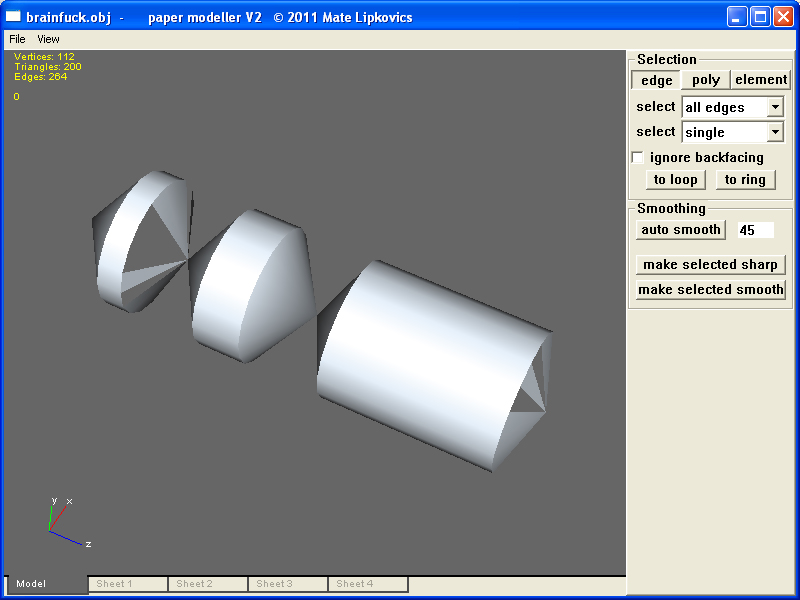
I made a basic, context dependent GUI, which is (by chance) very similar to 3ds Max's right side toolbar. I have lots of glitches with the GUI, it will be a lot of work to get it right (programming and "user experience"-wise). But at least I can move on and I don't have to shit around with ""hotkey"" input.
Reimplemented selection and added some new features. I think my "biggest strength" is the ability to introduce useful features (if it is an ability at all...), so in the end, I think I have some pretty useful selection stuff (maybe more useful than Max's).
Implemented "sheet selection", so different sheets (where the unfolded geometry will be put) can be selected for display and for editing. It's much like the upside down tabs in AutoCAD like software than 3ds Max's multi-viewport layout.
The main problem with it that it's a bit out of place: it's openGL rendered, self implemented stuff, not a win32 widget thing.
Maybe I'm just being pessimistic.
That's pretty much it for now, screenies: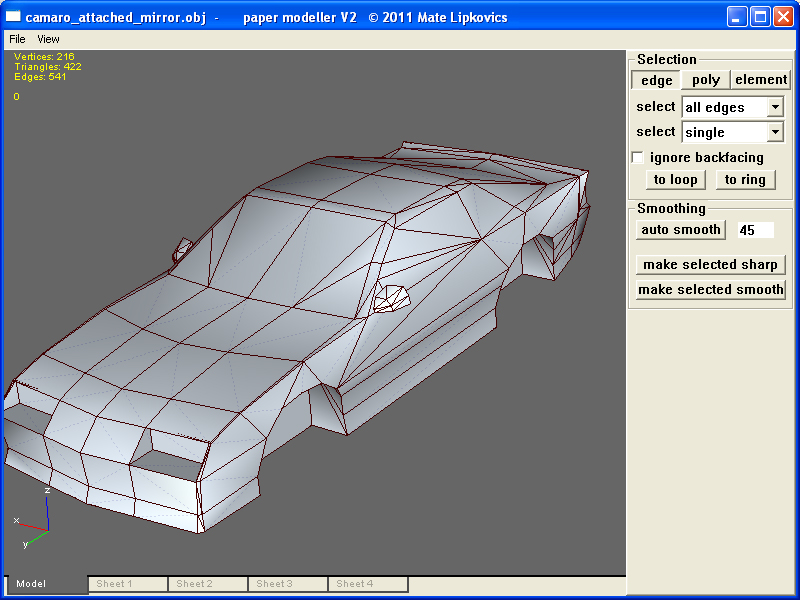
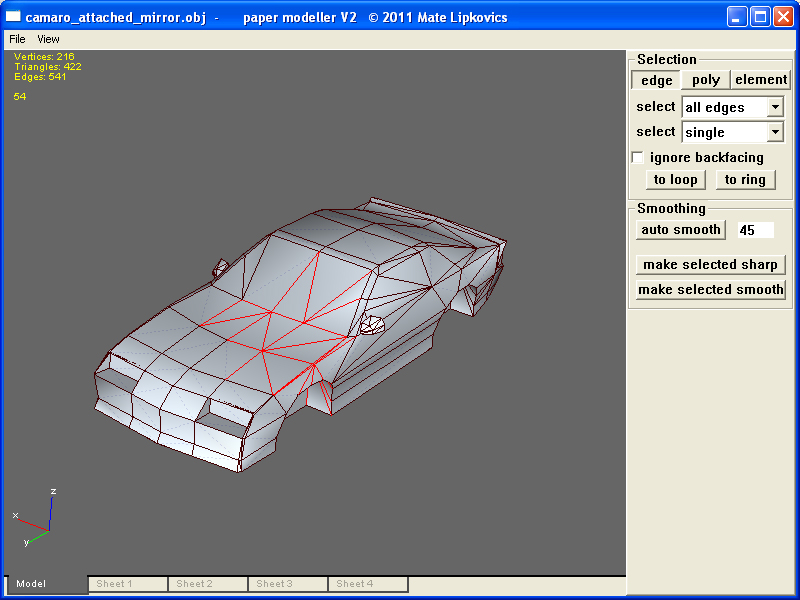
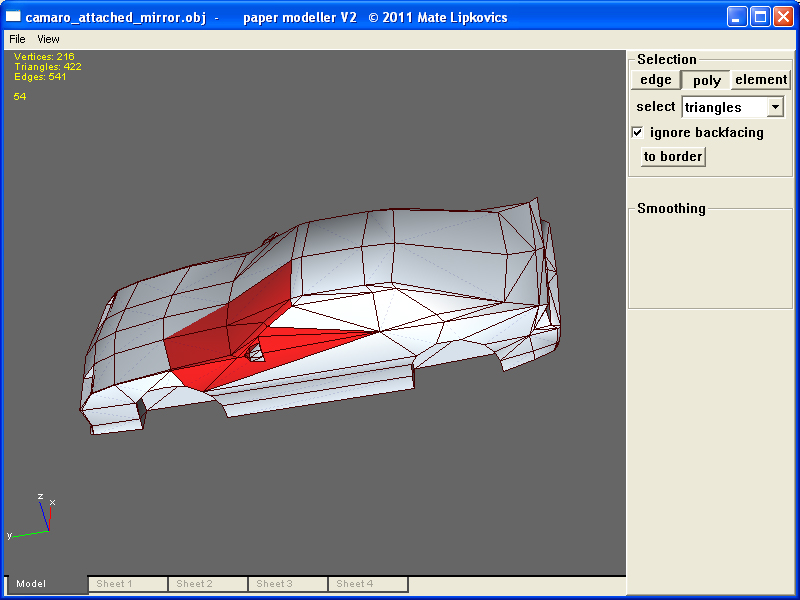
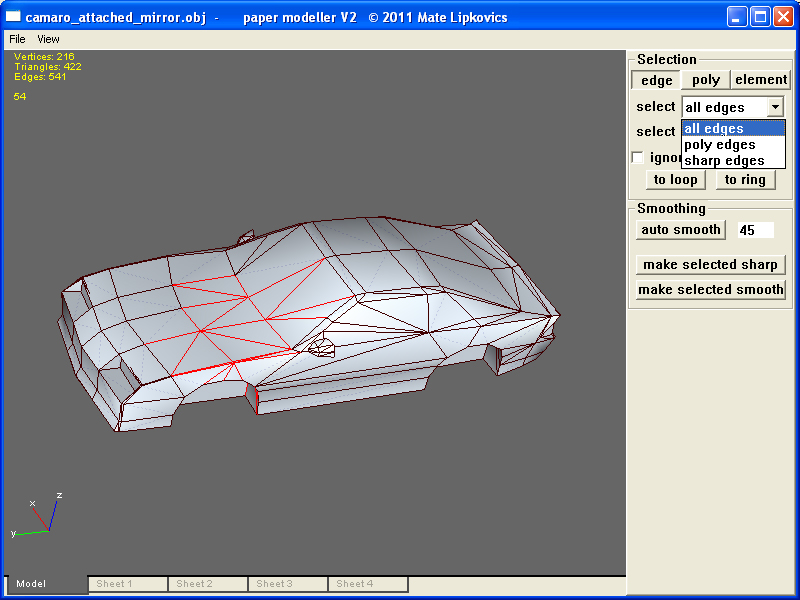
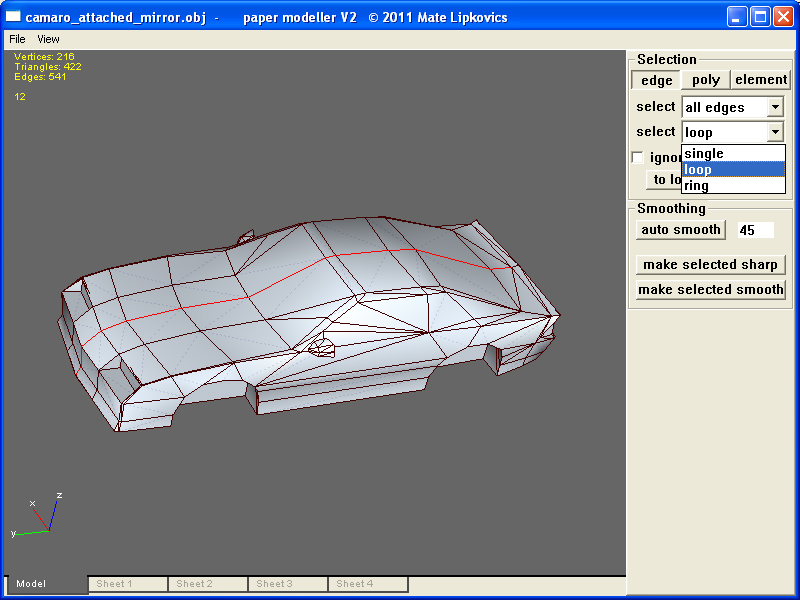

I don't think having a finished polished project is going to appeal to the public as much as you say. What people really look for is something that provides [u]value[/u] over anything else. For example, just yesterday I was looking for a tool that would help me turn a photo into a texture, the problem is that the photo was taken on an angle and I needed to straigthen the angle of the image so it would fit nicely into a square. Something that would help me do that would provide immediate value and I would be willing to pay a few bucks for it.
The need to make the project finished and polished is more to do with competition, people are more likely to pay for a tool that appears to be bug free over one that isn't, but [u]value[/u] comes first.
The problem with your paper modeller from my point of view is that it looks like every other modeller. In other words, it doesn't provide any value over some other more finished and polished tool out there.
However, if you can create even one feature that provides value. Like, solving some annoying problem in the current asset pipeline then your tool suddenly becomes something that people will be willing to download.
Provide the value first, add the polish later. Do that and you'll be on a winner.